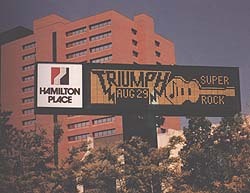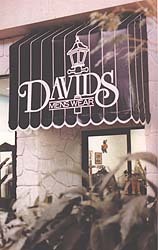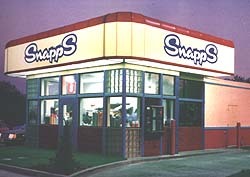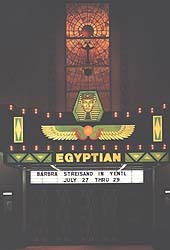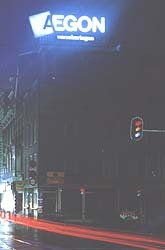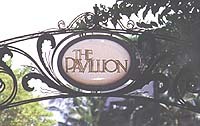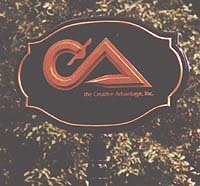Uncategorized
Types of Signs
Sign Users
Published
18 years agoon

The business person can choose among a wide variety of sign structures — roof signs, free-standing signs, projecting signs, wall signs. An understanding of the different types of signs available helps the sign user select the structure which will best serve the needs of his business and reach the most customers. The type of sign selected has a direct impact on the marketing strategy of a business.
Rather than giving strict definitions of the terms which follow, we will be discussing them generally, emphasizing the different functions which they perform. *(Please bear in mind that while the manner in which we use these words is fairly standard, some local sign codes may attach different definitions to these terms.)
* "A Glossary of Terms Commonly Used in the Sign Industry," Signage Quarterly, Vol. 1, No. 3, Institute of Signage Research, gives more exact interpretations of these terms.
The High-Rise Sign
Free-standing signs can be supported by tall poles which enable the sign to be seen from a distance. These are known as "high-rise" signs. Tall free-standing signs offer greater visibility than most other types of signs and are frequently used by businesses such as motels and gasoline service stations. These businesses are automobile-oriented and tend to serve a fairly large number of travelers who may be unfamiliar with the area.
The Low-Profile Sign
Some free-standing signs are built rather close to the ground; these are called low-profile or monument signs. Some people feel that such signs create a more subdued impression than traditional advertising graphics. In addition, these signs often incorporate the support structure into the overall design.
The Wall Sign
A wall sign is a sign which is affixed parallel to the exterior or interior wall of a building and projects less than 18 inches from it. Usually, it has only one face, although occasionally copy is also placed on the sides of the sign cabinet. A wall sign can either be constructed as a box-type sign, with the words attached to a sign cabinet (usually made of plastic); or it can be formed of individual letters which are mounted directly on the wall.
A wall sign is more difficult to read from a passing motor vehicle than is a sign which faces traffic directly. Because of this, the lettering on a wall sign has to be fairly large, and the sign itself usually cannot contain as much copy as a sign which directly faces the street. The advantage of a wall sign is that it can be easily integrated into the overall architecture of the building. Wall signs often function as architectural embellishment.
The Projecting Sign
A projecting sign is a sign which is attached to, and projects from, a structure or building face. It is often perpendicular to the building itself and is almost always double-faced. Because of these factors, it can be read by traffic headed in either direction on the street. Most local sign ordinances limit the size of projecting signs rather strictly, so they tend to be smaller than other types of signs. Projecting signs have long been used in European and older American cities.
The Roof Sign
A roof sign is erected on or above the roof line of a building and is wholly or partially supported by the building. Like a free-standing sign, it is aimed primarily at the distant or motoring public. Studies of the motel industry have shown that, because of the increased visibility which roof signs can offer, they are particularly effective in guiding those unfamiliar with the area to a location.
The Marquee
Marquee signs are signs which form a part of a marquee or canopy. Most commonly used by movie theaters, their large copy area provides room for fairly extensive information. Marquee signs are also used to create an image and often employ spectacular electrical and electronic displays.
The Backlit Awning
Technically, a backlit awning is a piece of reinforced polyvinyl chloride fabric stretched over a canopy-type frame and backlit from the interior by fluorescent or high-output lighting. Because of the high transparency of the fabric as well as its ability to spread light evenly over the entire canopy, a backlit awning provides extremely effective nighttime identification. Meanwhile, the awning portion of the sign provides shelter while the "spill light" brightens dark city streets.
The backlit awning was spawned during the early 80s in the Pacific Northwest — a logical area given its high annual average rainfall. Nevertheless, the trend has quickly spread throughout North America.
As of 1988, several major food franchises have specified backlit awnings for their businesses. The reason is obvious: backlit awnings work. They can provide — in some instances — complete round-the-business identification. In other words, a backlit awning stands out.
No one knows for certain the future of backlit awnings. Right now, they seem to be enjoying a honeymoon of sorts: everyone seems to like them — designers, architects, sign companies, city planners, zoning officials and end users. As they begin to proliferate (as has already happened in some major cities, such as Vancouver, BC), the backlit awning will certainly come under further scrutiny.
Indeed, there are still some major questions which need to be answered. Many sign codes do not presently include backlit awnings in their definitions of what a sign actually is. Similarly, there are technical questions about the engineering of backlit awnings which are just now beginning to surface. Nevertheless, it appears that the backlit awning is gradually becoming a part of the permanent visual environment. Sign users and designers should add this to their list of possible applications.
The Awning Sign
An awning sign is a non-illuminated sign which is usually painted or screen printed onto the surface of an awning made of flexible material and which does not extend vertically or horizontally beyond the limits of the awning. Awning signs offer the possibility of three faces for copy. Because they are not illuminated, their effectiveness is curtailed at night; in addition, their limited size means that they cannot always reach potential customers passing by in motor vehicles. The business person should be aware that canvas awning signs require considerable maintenance and lack permanence.
The Electronic Message Center
An electronic message center is a sign on which differing copy is shown on the same lampbank, i.e., an electronic or electrically controlled device which displays the time and temperature or other messages. Similar to a readerboard or a window sign, copy can be changed quickly and efficiently. In addition, an electronic message center offers the capability of displaying several messages in sequence. Many businesses use these signs to display public service messages and product advertising.
Accessory Signs:
The Readerboard
A readerboard is a sign on which copy can be changed manually. It usually consists of a panel on which individual letters or pictorials are mounted. Like a window sign, it can advertise special prices or items. It can also be placed so that it can be easily seen from a passing motor vehicle.
In order to take advantage of this sign’s potential, the copy must be changed fairly often. People passing by a readerboard that is not well-maintained receive a poor image of the business. Companies which manufacture and sell readerboards usually offer a maintenance program. For a set monthly fee, they will see that the copy is changed regularly and that the sign is kept in good condition.
The Banner Sign
A banner sign is made of lightweight material such as cloth, paper or flexible plastic and is usually not enclosed in a rigid frame. Banner signs are often used as temporary signs to announce grand openings, open houses or to make some other special announcement. Banner signs are used to give the impression of something new or exciting happening.
SPONSORED VIDEO
Introducing the Sign Industry Podcast
The Sign Industry Podcast is a platform for every sign person out there — from the old-timers who bent neon and hand-lettered boats to those venturing into new technologies — we want to get their stories out for everyone to hear. Come join us and listen to stories, learn tricks or techniques, and get insights of what’s to come. We are the world’s second oldest profession. The folks who started the world’s oldest profession needed a sign.
You may like

American Sign Museum Names New Executive Director

3 Things Print Pros Must Do to Build Stronger Relationships in the Interiors Market

Graphics Turn an Eyesore Cooler Into a Showpiece Promo in Historic Plaza
Subscribe

Bulletins
Get the most important news and business ideas from Signs of the Times magazine's news bulletin.
Most Popular
-

 Tip Sheet1 week ago
Tip Sheet1 week agoAlways Brand Yourself and Wear Fewer Hats — Two of April’s Sign Tips
-

 Ask Signs of the Times3 days ago
Ask Signs of the Times3 days agoWhy Are Signs from Canva so Overloaded and Similar?
-

 Photo Gallery1 day ago
Photo Gallery1 day ago30 Snapshots of the 2024 ISA Sign Expo
-

 Real Deal1 week ago
Real Deal1 week agoA Woman Sign Company Owner Confronts a Sexist Wholesaler
-

 Benchmarks6 days ago
Benchmarks6 days ago6 Sports Venue Signs Deserving a Standing Ovation
-

 Editor's Note2 weeks ago
Editor's Note2 weeks agoWhy We Still Need the Women in Signs Award
-

 Women in Signs1 week ago
Women in Signs1 week ago2024 Women in Signs: Megan Bradley
-

 Photo Gallery1 week ago
Photo Gallery1 week ago21 Larry Albright Plasma Globes, Crackle Tubes and More

